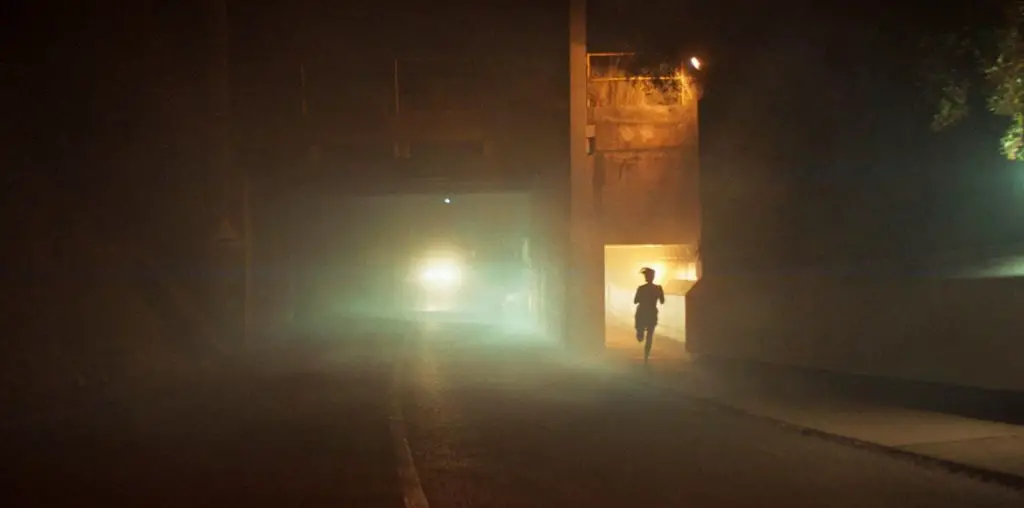
In December 2004, Leonardo DiCaprio and Tobey Maguire received an unwanted Christmas gift: a 16-page lawsuit from the co-producer of a 1996 no-budget movie called “Don’s Plum,” which featured the two mega-stars as part of an ensemble cast. The lawsuit, filed by one John Schindler, said DiCaprio and Maguire “have intentionally interfered with the exhibition and distribution” of the movie by stating their opposition to the commercial release of the film, thus scaring away potential distributors. This was not the first time that “Don’s Plum” was dragged into court. An earlier suit by another producer of the film, David Stutman, against the two stars was settled in September 1999. Stutman made the same claim as Schindler, but was able to wrest a compromise that allowed “Don’s Plum” to be released everywhere except the United States and Canada.
So what is the big deal over this little movie? To appreciate the brouhaha, one needs to track down a copy of “Don’s Plum” and dissect both its contents and its production history.
“Don’s Plum” took six days to shoot (three in 1995 and three the following year). Quite frankly, it looks it. Shot in a grimy black-and-white 16mm, the action centers in a Los Angeles diner where a group of slackers in their early twenties gather for an evening of stale food and scatological conversation.
The link to the circle are the guys: Derek (Leonardo DiCaprio), a chain-smoking wise-a*s who doesn’t think twice about openly insulting people within earshot at other tables, Brad (Scott Bloom), a sensitive guy with crystal blue eyes, Ian (Tobey Maguire) a vegetarian goofball whose high-pitched voice and clownish demeanor recall the character of Screech in the TV show “Saved by the Bell,” and Jeremy (Kevin Connolly), an aspiring actor. Joining the guys is Brad’s current girlfriend Sara (Jenny Lewis), who is shocked to hear of Brad’s gay tendencies but who later turns Sapphic when her pal Juliet (Heather McComb) turns up and joins the table. Ian invites a waitress from a jazz club (Meadow Sisto) while Jeremy arrives with a hitchhiking hippie named Amy (Amber Benson).
And then, once everyone is seated, “Don’s Plum” dribbles endlessly in no clear direction. Much of the film was reportedly improvised and it shows. Dialogue is wasted on foul language, name calling, and insipid descriptions of masturbation, oral sex, homosexual encounters, sex-for-hire, drug usage and family scandals. Within a 90-minute roundtable over coffee, cola and French fries, the characters begin to unveil various secrets which respectively plagued them: a father’s suicide, molestation by a sleazy uncle, narcotic addiction, a hitherto unannounced gay lifestyle, etc.
There are also several fights — Derek’s vituperative mouth demeans Amy to the point that she runs away from the group, Derek’s attempt to experience carnal knowledge with Sara in a backroom ends in a slap to his skull by the unappreciative girl, and Ian and Jeremy get into a fistfight which spills into the street. At various points, the characters retreat one at a time to a bathroom and speak to themselves in the mirror about the action going on around them.
If you think any of this sounds interesting, then perhaps I’m making the film seem more compelling than it is. “Don’s Plum” looks and plays like a student film made by ambitious young people who never experienced life. The characters are so obnoxious that it is impossible to imagine why anyone would like to be in their presence, and their conversations become so painfully sordid that it feels like a Jerry Springer episode designed for the art house snob set.
Any interest in the film today would be based in DiCaprio and Maguire, who are both awful. DiCaprio spends most of the film smoking and cursing, and a late bit of acting when his deep secret is revealed feels like an Emoting 101 homework assignment for a second-tier drama school. Maguire, however, can’t stop acting. He mugs, pops his eyes, cracks his voice, does clumsy dance moves, extends his middle finger and launches into a pugilistic rage — for no very clear reason except to call attention to himself and away from the other characters. The rest of the cast is an ensemble of monotony, and the black-and-white photography enhances the grey hue of their performances.
“Don’s Plum” was quickly forgotten and would’ve probably been lost in obscurity except for a little movie called “Titanic.” With DiCaprio as the self-proclaimed king of the world, and with Maguire’s star in ascension thanks to “The Ice Storm” and “The Cider House Rules,” the producers of “Don’s Plum” dusted off their movie with the hopes of bringing it to theaters. Alas, DiCaprio and Maguire worked to keep the movie off the screen, claiming that their appearances in “Don’s Plum” were strictly intended as a “favor to a friend” under “the express agreement that it would never be exhibited as a feature-length motion picture.” (Those quotes come from the original legal maneuvers).
In retrospect, the idea of doing a no-budget black-and-white movie as a favor with the promise that the film never get shown seems a bit odd, especially since DiCaprio was already established as an Oscar-nominated movie star (Maguire’s fame took a little longer to secure).
According to both Stutman and Schindler’s respective lawsuits, DiCaprio and Maguire used their influence to shoo away major distributors, with the alleged threat that neither actor would work with any company that picked up the film. In fairness, it seems strange given that “Don’s Plum” would not be considered as multiplex material given its style and substance. One could imagine a smaller boutique distributor expressing interest, but a Hollywood studio would probably balk at the flick even with its well-known stars.
“Don’s Plum” eventually turned up on the big screen in February 2001 at the Berlin Film Festival, where it attracted attention strictly as a curio due to the legal problems surrounding it. The film has since played in many countries, but it has never enjoyed any degree of box office success. To date, the film has never had a commercial presentation in North America and it can only be viewed on bootleg video. At first, the bootlegs that circulated included a time code on the screen and an incomplete music score, which clearly suggested the copy was pilfered during the post-production process. More recent bootlegs, however, have a clear picture and full soundtrack, and these are obviously based on European DVD releases.
To date, neither DiCaprio nor Maguire have publicly responded to the new legal volley about “Don’s Plum.” And even if the film eventually gets an American release, most people will probably be disappointed with the movie. Not unlike many legal tug-of-wars, this case is the proverbial much ado about nothing. Frankly, this plum isn’t especially juicy.
____________________________________________________________
IMPORTANT NOTICE: The unauthorized duplication and distribution of copyright-protected material is not widely appreciated by the entertainment industry, and on occasion law enforcement personnel help boost their arrest quotas by collaring cheery cinephiles engaged in such activities. So if you are going to copy and sell bootleg videos, a word to the wise: don’t get caught. The purchase and ownership of bootleg videos, however, is perfectly legal and we think that’s just peachy! This column was brought to you by Phil Hall, a contributing editor at Film Threat and the man who knows where to get the good stuff…on video, that is.
Discuss The Bootleg Files in Back Talk>>>

